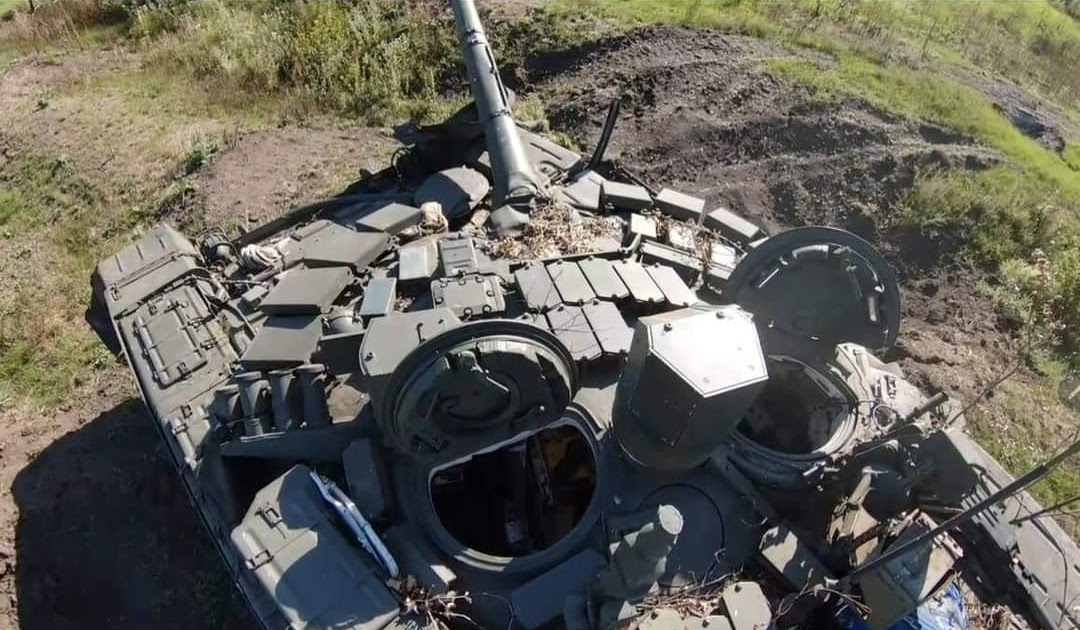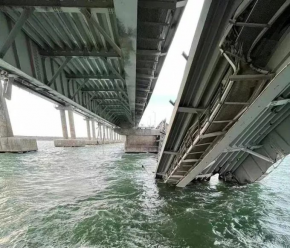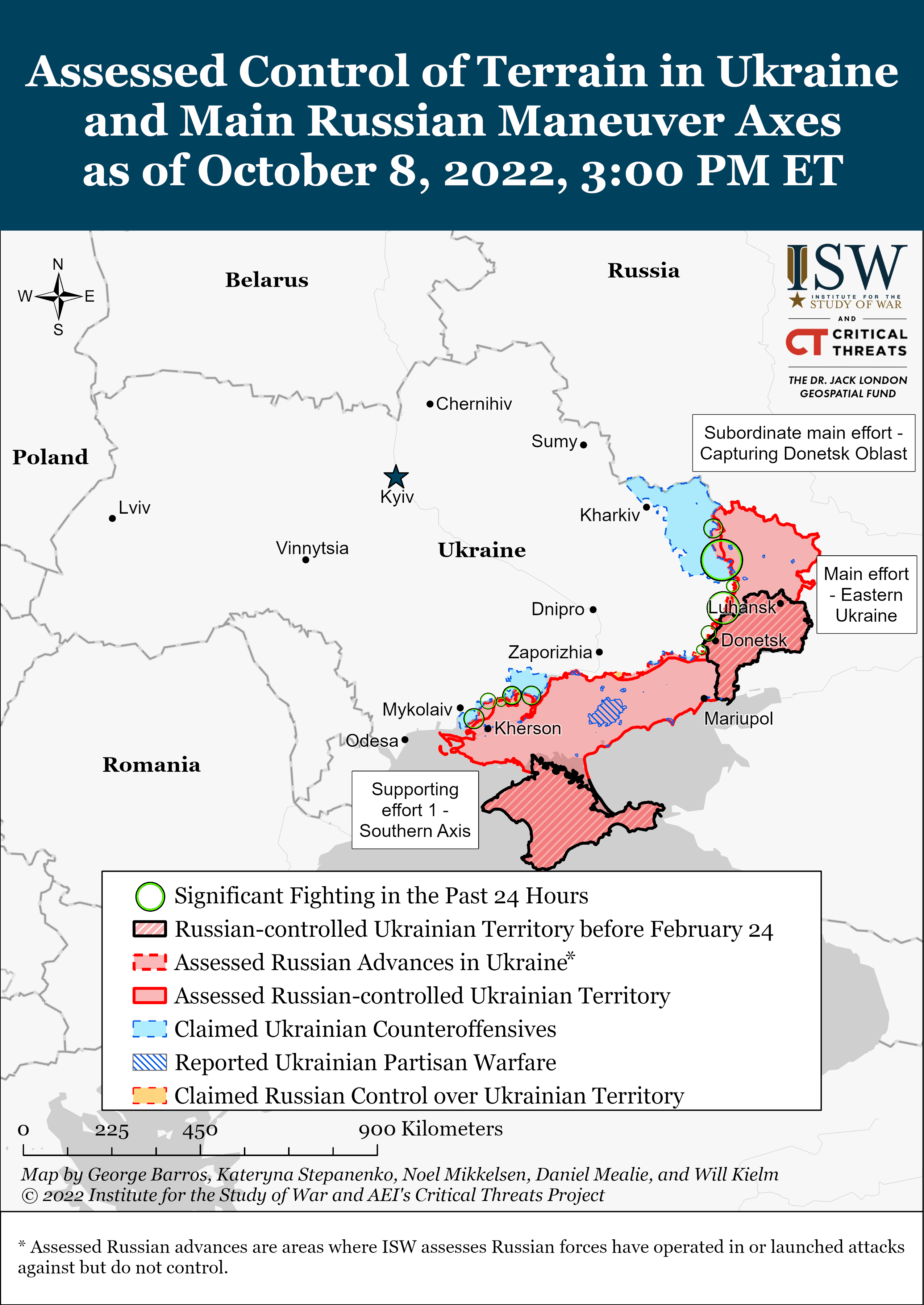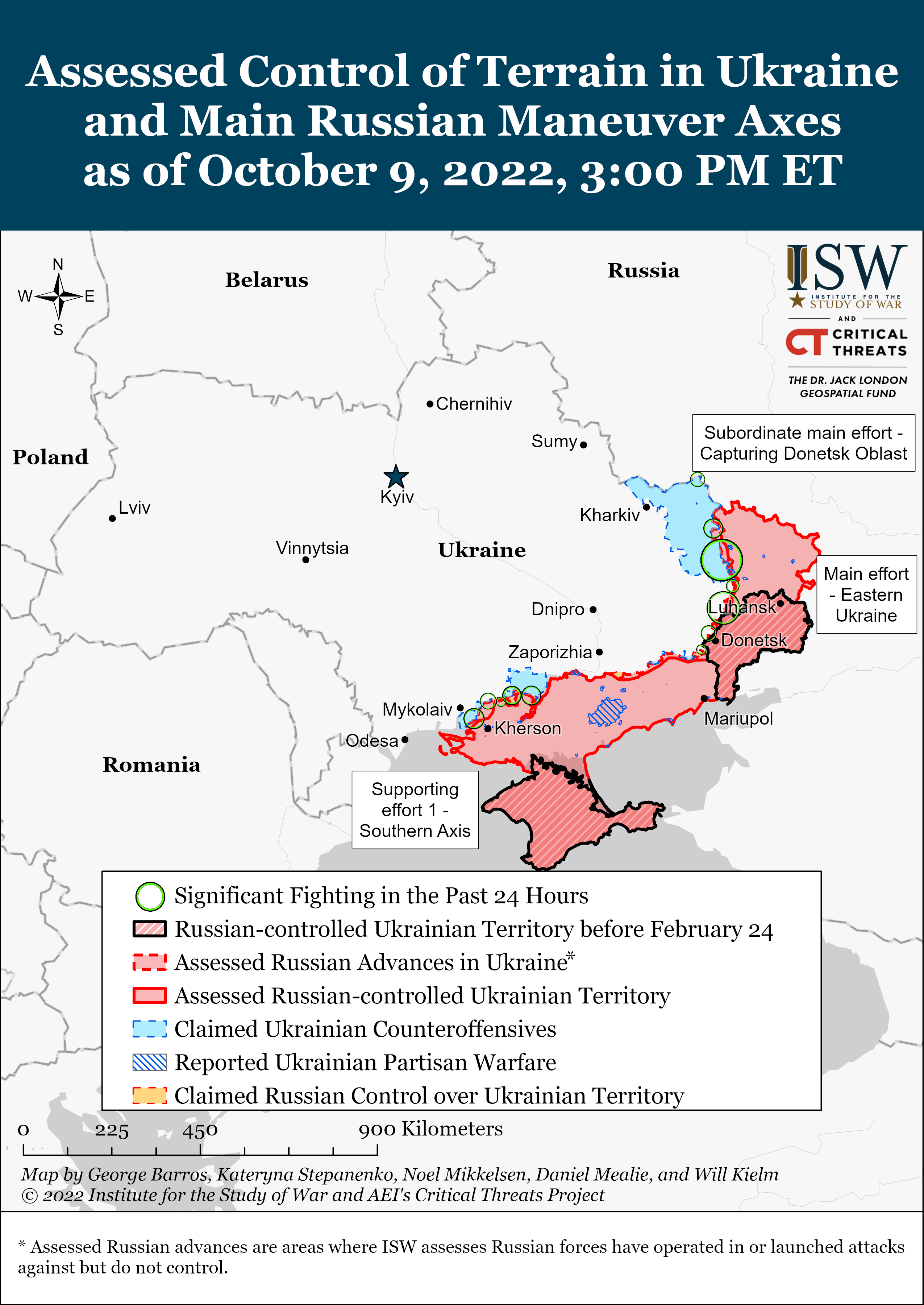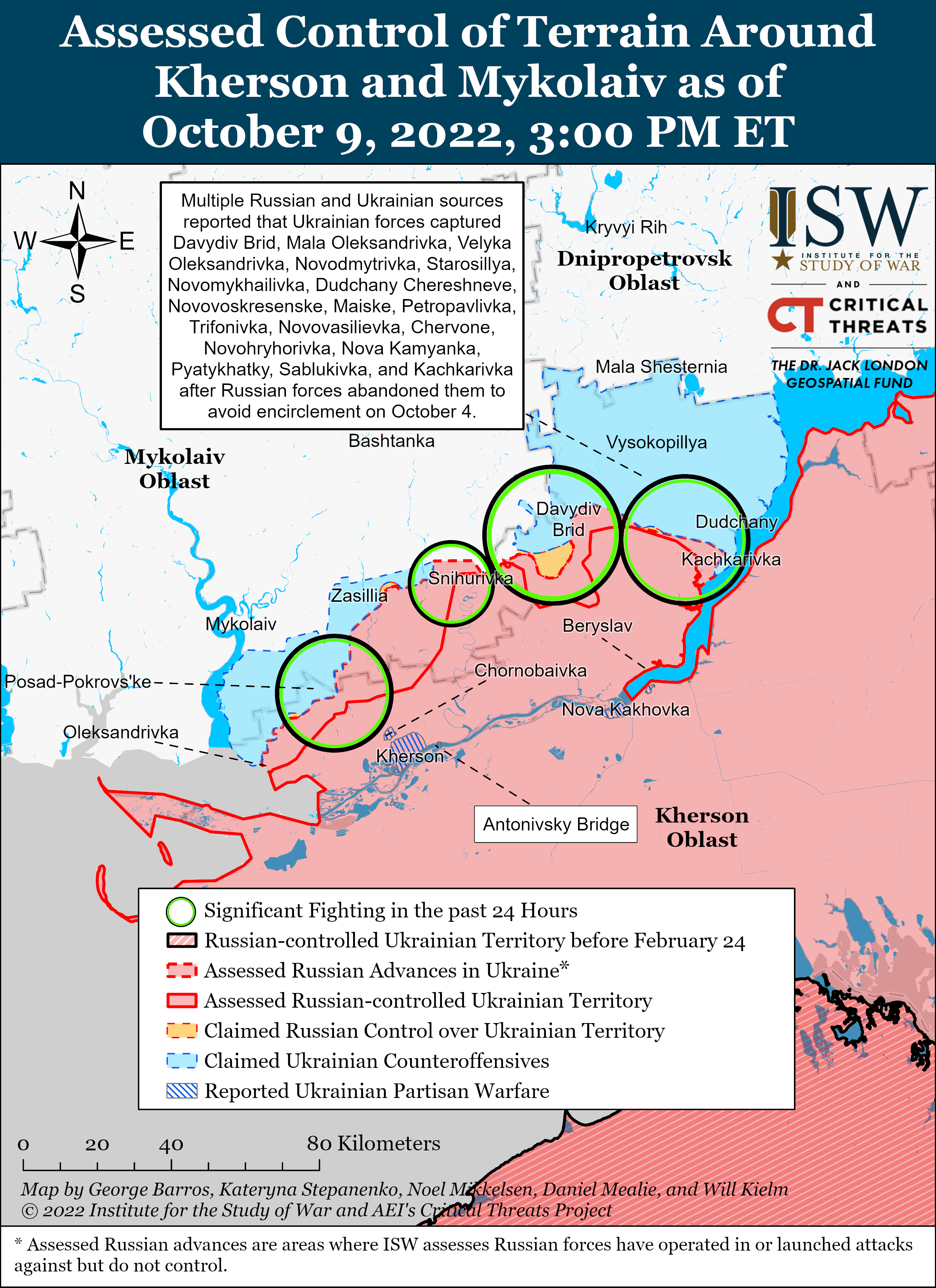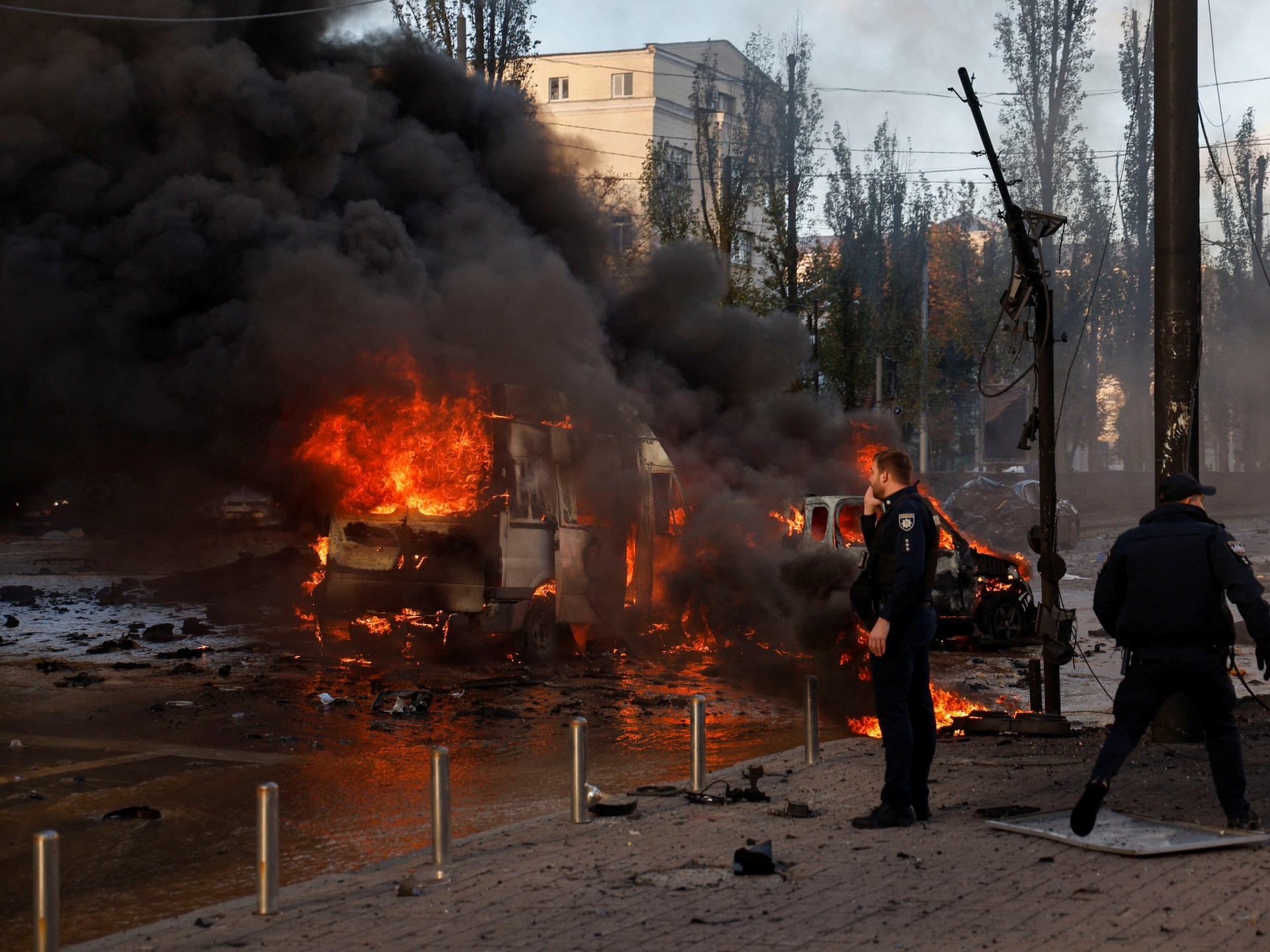Part 1 of 5: The clock is ticking
2. In the prior videos, there were debris impacting the rail bridge, after the initial blast on the Kerch Strait bridge to Crimea that caused the fire on the train tracks. There are no indications that any of the tanks of the train exploded. Each tank seems to be intact from the footage I have seen thus far. Therefore, I assume that the damage was caused by the explosion from the other bridge and the burning tanks were responsible for the damage to the rail bridge.
3. The smart ones in Crimea are getting out before they are in HIMARS range. They also restarted a ferry service — the Russians had a plan B for damage to the Kerch Strait bridge to Crimea and executed it — they will need luck to keep lines of communications with Russia open, going forward. The Russians will keep sucking at the logistics soda straw called the Kerch Strait bridge.
1. Thanks for your input on the rail portion of the Kerch Strait bridge.I know that in wartime repairs can be carried out, and train services restarted, much quicker than in peacetime.
It would seem possible that the 'undamaged' track might be brought back into use more quickly, however single line working would mean a much less frequent service is possible. However without knowing how the line is signalled there might be more problems running a regular frequency service, especially if the signalling system relies on electrical cable carried across the bridge deck - this would likely be seriously damaged.
(a) Below, a sample of Russian propaganda to push their agenda and support the stupid idea that traffic on the bridge has returned to normal. It has not. Only 20 to 40 cars can pass every hour, only and one lane is open. This leads to 480 to 960 cars per day, before it allowed 40k cars per day. Even Russian state media said, “the Crimean authorities have asked residents of the region not to use the [Crimean] bridge unless absolutely necessary... the recommendation is related to the limited capacity of the bridge.”
(b) This means the intended effect of the attack on the road span of the Kerch Strait bridge to Crimea has been achieved — as a collateral benefit, destruction of a train and this has disrupted regular supplies to Crimea, converting a supply pipeline, to a soda straw — this is shaping operations 101.
2. In the prior videos, there were debris impacting the rail bridge, after the initial blast on the Kerch Strait bridge to Crimea that caused the fire on the train tracks. There are no indications that any of the tanks of the train exploded. Each tank seems to be intact from the footage I have seen thus far. Therefore, I assume that the damage was caused by the explosion from the other bridge and the burning tanks were responsible for the damage to the rail bridge.
(a) Pretty clear the local authorities working Russian Deputy PM Marat Khusnullin rushed repairs to push the train service to restart. Talk of the alleged danger of "humiliating" the Putin is most often heard from talkers who are hurting from the humiliation of their past cheerleading for Putin. They hope that if western diplomacy rescues Putin from his debacle that started in Crimea, as it will also redeem them from theirs.
(b) The sure way to avoid nuclear war is for Russia not to start one. If Putin does not do it, nobody in Ukraine or NATO will. The Russians need to learn the American lesson from the Korean War — a nuclear weapon is not to be used, even when Soviet pilots were flying sorties for North Korea and Chinese PLA troops were directly fighting Americans there.
(c) Going forward, Ukraine will need a mix of forces able to attack the adversary in depth while also preserving their own mobility, for the next stage of battle. The sure way to end the occupation of Crimea is for Russia to withdraw from all of Ukraine. The war is all of Russia's making. The war stops when Russia stops it.
(d) The Russians need to learn the American lesson from the Vietnam War, an American withdrawal from Vietnam did not destroy America. Likewise, the withdrawal of the Russian invasion force from Crimea will not destroy Russia.
3. The smart ones in Crimea are getting out before they are in HIMARS range. They also restarted a ferry service — the Russians had a plan B for damage to the Kerch Strait bridge to Crimea and executed it — they will need luck to keep lines of communications with Russia open, going forward. The Russians will keep sucking at the logistics soda straw called the Kerch Strait bridge.
Last edited:
























































